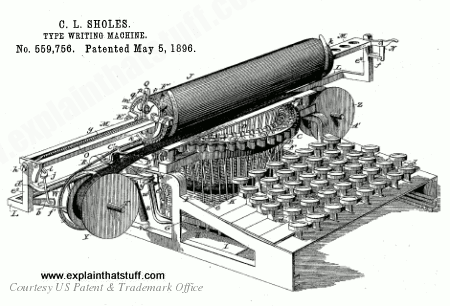keyboard waffle iron
Saturday, December 6, 2014
cortez wilson peters
"Perhaps the last great world manual typewriter champion was Cortez Wilson Peters, who reached speeds of 180 words a minute over periods of up to 12 minutes, or 15 key strokes a second. Peters was born in Maryland on December 23, 1906. He operated business schools in Washington DC, Chicago and Baltimore and appeared on television shows such as What's my Line? and Ripley's Believe it or Not (on which he typed 100 flawless words a minute while outdoors in subfreezing temperatures and wearing fingerless mittens)."
Wow. World's champion portable typist. That's an awesome title.
And look at that Royal poster in the background!
Another champ aids Army and Navy. Cortez W. Peters, world's champion portable typist, is shown with ten late model standard size typewriters which he turned over to the government to aid the drive for 600,000 machines for the Army and Navy. The typewriters were taken from three business schools which Mr. Peters operates in Washington, D.C., Baltimore, Maryland, and Chicago, Illinois.
Cortez Peters again, with trophy.
Aids Army and Navy typewriter drive. Cortez W. Peters, world's champion portable typist, recently turned in ten late model standard size typewriters which he turned over to the government to aid the drive for 600,000 machines for the Army and Navy. Mr. Peters operates three business schools in Washington, D.C., Baltimore, Maryland, and Chicago, Illinois.
Friday, December 5, 2014
flora payne whitney miller
[Flora Payne Whitney Miller, three-quarter length portrait, seated at typewriter, facing front]
Thursday, December 4, 2014
explaining qwerty
"Why are the keys on a typewriter or computer keyboard arranged in such a strange way? Why not in a much more sensible fashion? If you've ever typed quickly on a mechanical typewriter, you'll know the reason: the type hammers move up and down so quickly that they can collide and jam together. Then you have to reach into the guts of the machine to disentangle them, getting ink and oil all over yourself in the process. To reduce the risk of that happening, the designer of the first popular typewriter, Christopher Latham Sholes (1819–1890), rearranged the keyboard so letters often-used were spaced widely apart. For example, if you type the word P-R-O-B-A-B-L-Y very quickly, your fingers have to keep leaping from one side of the keyboard to the other as you go from one key to the next. That gives each type hammer time to fall back down and get out of the way of the next hammer that's about to rise up, reducing the risk of a jam. Now computer keyboards are entirely electronic, there's no reason at all to keep the QWERTY keyboard layout. We keep it because most people know it—and for no other reason." --Chris Woodford, http://www.explainthatstuff.com/typewriter.html
model typewriter inspection
Louis A. Caulfield, 37 Belfort Street, Dorchester. Delivering a heavy type-writer about half a mile. Works for Model Typewriter Inspection Co. Says he is sixteen years old and gets $6 a week. Taken on Boston Common. Location: Boston, Massachusetts.
battle-scarred typewriter
Battle-scarred typewriter. Veteran of World War II, this typewriter has been through a Japanese bombing at sea. Everything in the room in which it was located was completely demolished except the typewriter, including the table on which it was standing. Note damaged carriage--the result of a bomb.
source: http://www.loc.gov/pictures/resource/fsa.8b04486/
typewriters for victory
Hollywood enlists its typewriters for war. Hollywood studios have answered the nation's call for typewriters for the armed services. Picture shows a load of machines released by 20th Century Fox studies to two Uncle Sam's Waves. The schools and private owners to sell one out of every four machines to obtain 600,000 typewriters urgently needed by the armed services. New production ceased October 31. Typewriter manufacturers are now producing war materials.
enlisted typewriters
Conservation. Used typewriter campaign. The War Production Board (WPB) has launched a campaign to secure 600,000 used typewriters from business firms and private individuals. These machines are needed by the Army, Navy, Maritime Commission, Board of Economic Warfare, Lend-Lease and other government departments and agencies. John K. Stockham, Washington, D.C. insurance man, turns a machine over to Don MacDonald, Washington, D.C. typewriter dealer, who accepts it on behalf of the government at the fixed rate. This is one of the first typewriters thus enlisted in the war effort.
the typewriter campaign
Paramount Picture star sends her typewriter to war. Susan Hayward, Paramount motion picture star, does her share in sending typewriters to war. Pictures shows Miss Hayward selling her machine to the government as her contribution to the typewriter campaign. Uncle Sam needs 600,000 typewriters for the armed services and is contracting all possible typewriter users to urge them to release "1 out of 4" typewriters for Army and Navy service.
Subscribe to:
Posts (Atom)


















